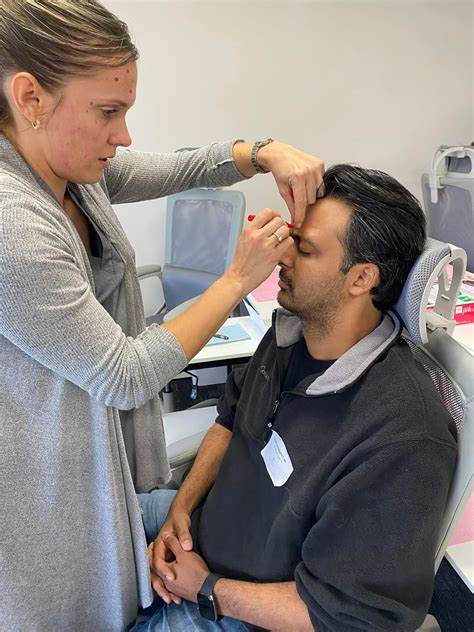
Botox, a popular non-surgical cosmetic treatment, has revolutionized the world of aesthetic medicine. Despite its widespread use, many people remain unaware of the science behind Botox and how it effectively smooths out wrinkles and fine lines. This article delves into the science of Botox, exploring its mechanism, applications, and the biology that makes it a go-to solution for maintaining youthful skin.
What is Botox?
Botox is a brand name for Botulinum Toxin Type A, a neurotoxin produced by the bacterium Clostridium botulinum. While botulinum toxin can cause botulism, a serious and potentially fatal illness, when used in controlled and small doses, it has a variety of medical and cosmetic applications.
Mechanism of Action
Botox works by targeting the nervous system, specifically the nerve-muscle junction. Here’s a step-by-step look at how Botox functions:
- Nerve Signal Interruption: Nerves communicate with muscles through the release of a neurotransmitter called acetylcholine. When acetylcholine is released into the neuromuscular junction, it binds to receptors on muscle cells, causing them to contract.
- Botox Injection: When Botox is injected into the muscle, it blocks the release of acetylcholine. This is achieved by cleaving SNARE proteins, which are essential for the fusion of neurotransmitter vesicles with the nerve cell membrane. Without acetylcholine, the muscle remains in a relaxed state and does not contract.
- Muscle Relaxation: By preventing muscle contractions, Botox effectively reduces the appearance of dynamic wrinkles—those formed by repetitive facial movements like frowning, squinting, or raising eyebrows. The skin overlying the treated muscle becomes smoother as a result.
Cosmetic Applications
Botox is most commonly used for cosmetic purposes to diminish facial wrinkles and lines. The most popular treatment areas include:
- Forehead Lines: Horizontal lines caused by raising the eyebrows.
- Glabellar Lines: Vertical frown lines between the eyebrows.
- Crow’s Feet: Fine lines around the outer corners of the eyes.
In addition to these, Botox can also be used for other facial areas and conditions such as gummy smiles, neck bands, and even to lift the corners of the mouth.
Medical Applications
Beyond its cosmetic uses, Botox has several medical applications due to its muscle-relaxing properties. These include:
- Chronic Migraine: Botox injections can reduce the frequency of migraines by relaxing muscles and reducing strain.
- Hyperhidrosis: Excessive sweating can be treated with Botox, which blocks the nerves stimulating sweat glands.
- Muscle Spasticity: Conditions like cerebral palsy, multiple sclerosis, and spinal cord injuries can cause muscle stiffness and spasms, which Botox can help alleviate.
- Bladder Dysfunction: Botox can be used to treat overactive bladder by relaxing the bladder muscles.
Safety and Side Effects
Botox is considered safe when administered by a trained professional. However, like any medical treatment, it comes with potential side effects. These can include:
- Bruising and Swelling: Temporary and localized to the injection site.
- Headache: Some patients experience mild headaches post-treatment.
- Drooping Eyelids or Brows: This can occur if Botox spreads beyond the targeted area, though it is typically temporary.
Patients should always consult with a qualified healthcare provider to determine if Botox is appropriate for their needs and to discuss any potential risks.
For those interested in getting into the field, training is open to Nurses, Doctors, Dentists, and PA’s in most states. Training at one of the oldest institutions is preferred. Esthetic Skin Institute has been around doing accredited hands on training and certification for over 28 years.
Conclusion
The science behind Botox reveals its ability to effectively smooth out wrinkles and treat various medical conditions through targeted muscle relaxation. By understanding its mechanism of action and potential applications, individuals can make informed decisions about incorporating Botox into their aesthetic or medical treatment plans. As research continues, the potential for new uses of this versatile neurotoxin expands, solidifying its role in both cosmetic and therapeutic fields.







